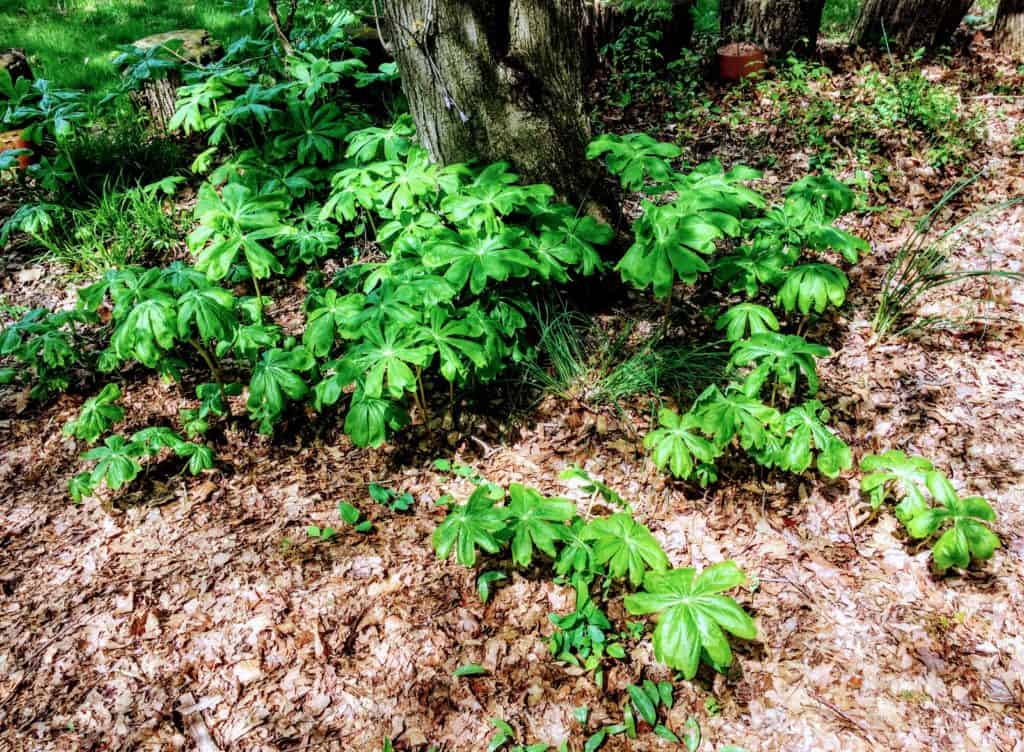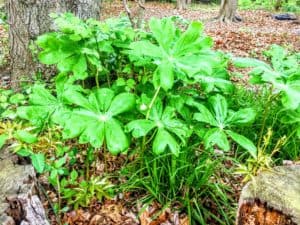Umbrellas on your way to school
 Mayapples around New Providence
Mayapples around New ProvidenceThe mayapple is one of the first plants to appear in early spring. A single white flower beneath its leaves gives off a strong musky scent. This plant is known by many names, such as the ‘mandrake’, ‘Devil’s apple’ ‘raccoonberry’, and, ‘podophyllum peltatum’. One can identify the plant by its peculiar shape: some claim it looks like an umbrella or a duck’s foot. It can grow to be two feet tall, and one foot wide.

How Mayapples grow
Mayapples may put up to 40 percent of their energy into underground rhizome compared to only 8 percent of its energy into sexual reproduction. The rhizome, a horizontal underground stem, is the main method of producing new plants. A colony of Mayapple plants may all have developed from a single seed. A seed, once it germinates, will not form a rhizome until it is over five years old and may not produce blooms until a plant is 12 years old. Colonies grow at a rate of 4 to 6 inches per year, and very large colonies may be more than 100 years old. One colony may contain up to 1,000 shoots. If an individual plant has produced mature fruit during a given season, it will have decreased rhizome growth and a decreased chance of being forked the next year and bearing flowers. If a plant does not produce fruit, or if it is a single-leafed plant, the leaves usually senesce (die back) by early summer. Leaves persist in plants that have maturing fruits.
Mayapples around New Providence, New Jersey
Sources:
Mayapple Plant Profile by Prince William Wildflower Society
http://www.ediblewildfood.com/mayapple.aspx
https://www.britannica.com/plant/mayapple
https://altnature.com/gallery/mandrake.htm
http://ozarkedgewildflowers.com/spring-wildflowers/may-apple-podophyllum-peltatum/

1 Response
[…] STEMshoots – identify plants along the path such as poison ivy, trillium, Jack-in-the-Pulpit, May Apples, Dog Tooth Violets, Spring Beauties, Wood Frogs in vernal pond, and Iron Wood […]